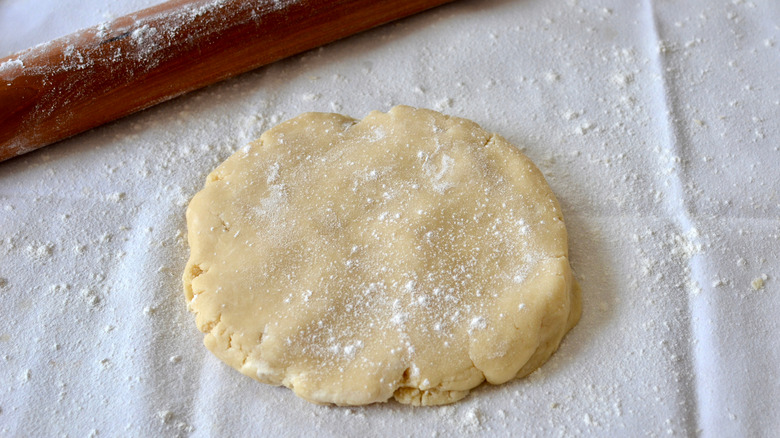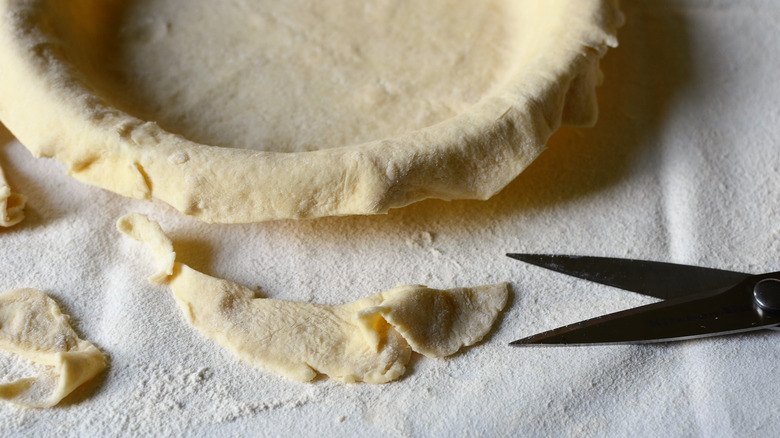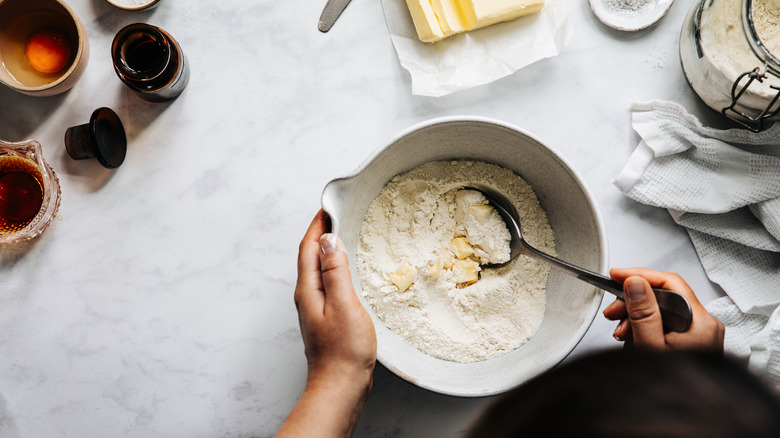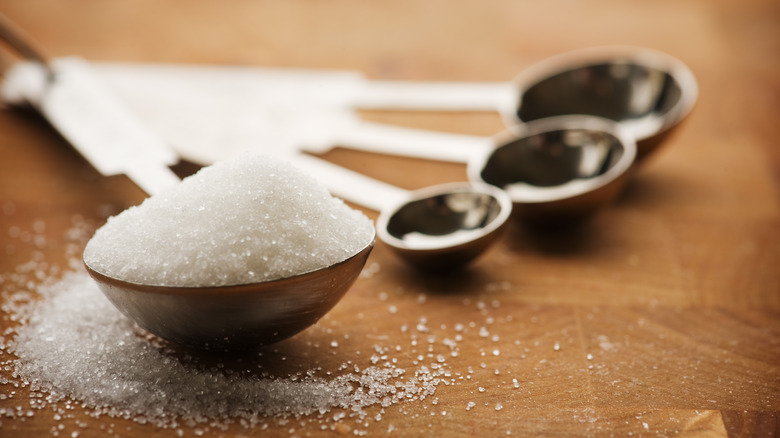Pâte Brisée Vs. Regular Pie Crust: What's The Difference?
When it comes to pie-making, the crust is the canvas that holds the masterpiece. Pâte brisée and regular pie crust are two primary contenders in this pastry arena, each offering a distinct texture and taste to complement a variety of fillings. Pâte brisée, a French-style crust, often finds its home in sweet and savory pies alike, while the regular pie crust, a classic American staple, is known for its versatility.
While bearing striking similarities — they are both crusts — there are subtle differences between the two that result in final products with different textures and flavors. From the temperature of the butter and water used in each to the way certain ingredients affect the formation of gluten (here, the details are important). Neither pâte brisée nor traditional pie crust are better or worse than the other, but it is important to keep in mind what you want the overall experience of your pie, tart, or other baked goods to be when deciding which to use.
What is pâte brisée?
Pâte brisée, a fundamental pastry dough in French cuisine, translates to "broken pastry" in English. This dough serves as a versatile base for a variety of sweet and savory dishes, including quiches, tarts, and pies. Its defining characteristics are a crisp, crumbly texture and a buttery, slightly salty flavor.
To create pâte brisée, the process typically begins by combining all-purpose flour with cold butter and a pinch of salt. The cold butter is essential to achieving the desired flakiness in the final product. The mixture is then blended, often using a food processor or by hand, until it resembles coarse crumbs. Some recipes might include a small amount of sugar for sweet variations. The next step involves gently bringing the mixture together into a cohesive dough. This is typically done by adding cold water and kneading the dough in a process called "fraisage" whereby the heel of the palm is used to drive the flour into the dough, more fully incorporating the two. It is then chilled in the refrigerator to allow the fats in the butter to solidify and the dough to rest.
Once the pâte brisée has chilled adequately, it is rolled out and used as a base for various culinary creations. The beauty of pâte brisée lies in its ability to complement both sweet and savory fillings, making it a staple in French cuisine and a versatile tool for culinary enthusiasts.
What is a regular pie crust?
Standard American pie crust is often referred to as a "classic pie crust" or "flaky pie crust" and is a fundamental pastry used as the base for both sweet and savory pies in traditional Western cuisine. It is known for its delicate, flaky texture and neutral taste that complements various fillings. The typical ingredients for a regular pie crust include all-purpose flour, cold butter, lard, shortening, or a mixture of fats, salt, and cold water. The key to achieving a flaky crust is ensuring the fats in the dough remain cold and distinct throughout the preparation process.
To make a regular pie crust, the first step is to combine the flour and salt in a bowl. Next, cold cubes of the chosen fat are cut into the flour using a pastry cutter or fingers, aiming for a texture resembling coarse crumbs. It's important to maintain cold ingredients and work quickly to prevent the fats from melting into the dough completely. Once the mixture reaches the desired crumbly consistency, cold water is added and kneaded gently until the dough just comes together. The dough is then shaped into a disc, wrapped in plastic wrap, and refrigerated to allow the fats to firm up and rest. After chilling, it's rolled out, placed into a pie dish, and filled with the desired filling before baking.
The role of fat and butter
A pâte brisée and a regular pie crust share fundamental ingredients: flour, fat, water, and salt. However, the core difference lies in how the fat is incorporated into the flour, ultimately affecting the texture and character of the resulting crust.
In pâte brisée, the butter is meticulously integrated into the flour using the fraisage technique. This technique involves blending cold, diced butter into the flour until the mixture resembles coarse crumbs. Following this, the mixture is worked with the heel of the hand, smearing the butter into thin layers within the dough. This thorough incorporation creates a homogeneous dough and coats the flour evenly in butter, preventing the formation of long gluten chains, resulting in a finer crumb and a more tender crust. The butter is evenly distributed throughout, ensuring a consistent texture.
On the other hand, a regular pie crust employs a different approach where the chosen fat is cut into the flour using a pastry cutter or fingertips. The objective is to leave small, visible pieces of fat distributed evenly throughout the dough. During baking, these fat pieces melt and release steam, creating pockets within the crust, resulting in a flakier texture.
Sugar makes a difference
Sugar is often — but not always — used in pâte brisée, and, when it is, plays a pivotal role in both flavor and texture. During baking, the sugar caramelizes, adding a subtle sweetness and an appealing crunch to the crust. But sugar also has a chemical role to play in pâte brisée, even when used in very small quantities. Sugar, being hygroscopic, attracts moisture to it and further inhibits the production of gluten during the fraisage process much like the well-kneaded in butter. Anyone who has baked bread or made pasta, knows that gluten is what gives flour-based delicacies their chewiness. Thus, by keeping gluten-formation in check, sugar in pâte brisée leads to a more delicate and tender crust.
Conversely, the regular pie crust, which is made without any sugar, has none of the caramelization from sugar, and a more pronounced gluten structure. This gives it a sturdier form that has more of a bite and pull. As you can imagine, regular pie crust — and pâte brisée made without sugar — are more appropriate choices for savory pies, such as chicken pot pie and quiche.




